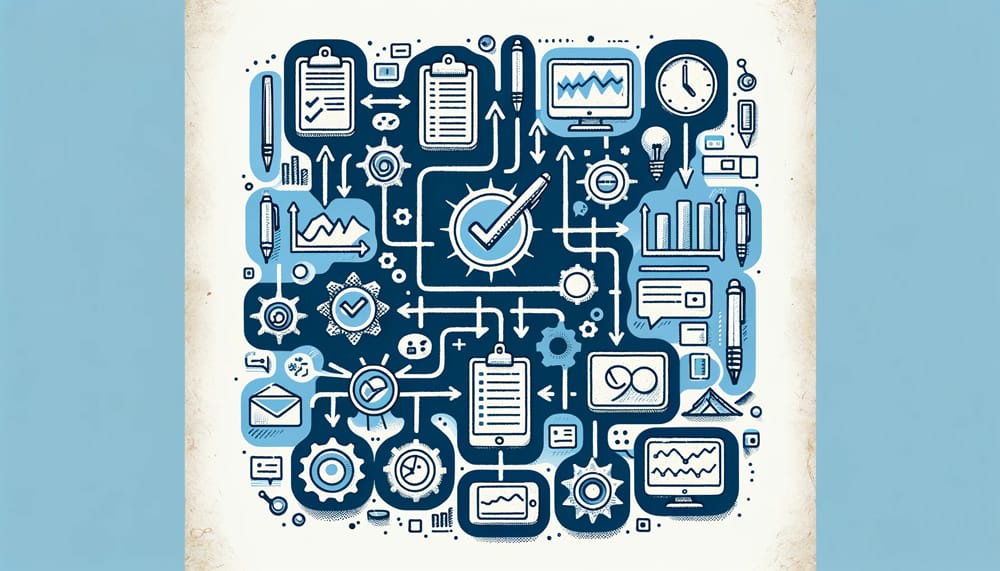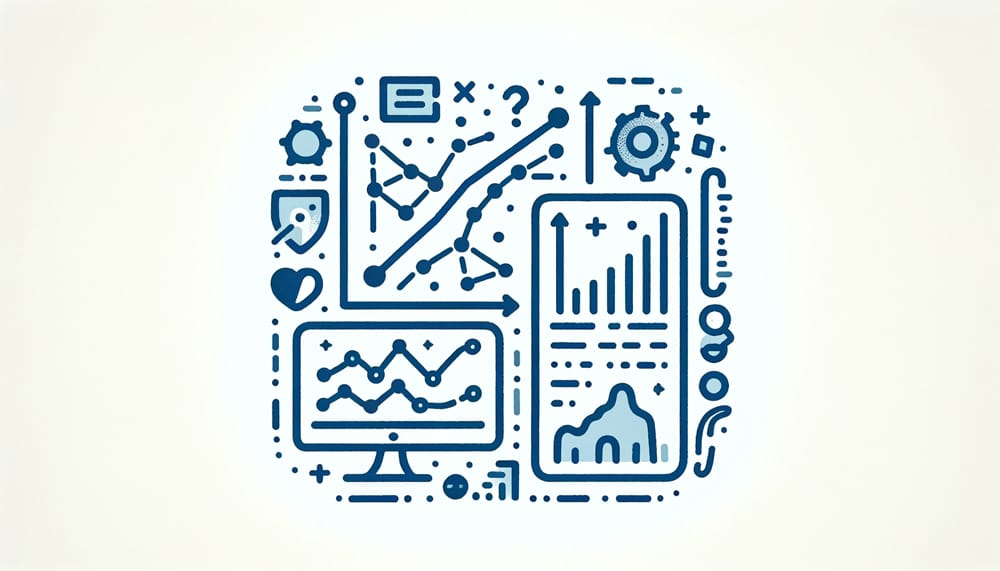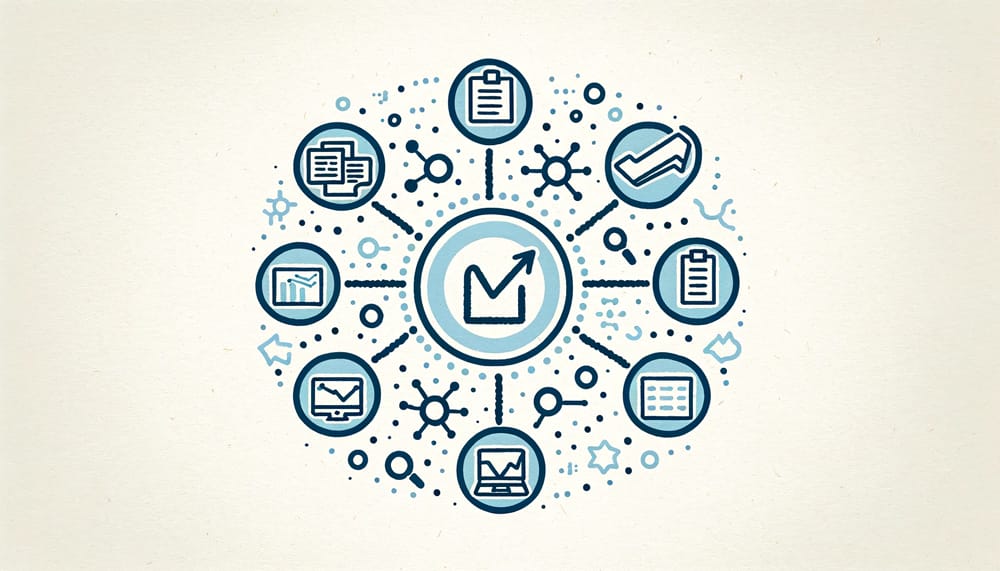Introduction to ESM Data Collection
The Critical Role of Effective Data Collection in ESM
In the intricate landscape of Experience Sampling Method (ESM) research, effective data collection is not just a process—it’s the cornerstone that supports the entire structure of a study. The quality of data collected directly influences the validity and reliability of the study’s findings. Effective data collection in ESM hinges on precision, consistency, and adaptability, ensuring that the real-time experiences and responses captured are both accurate and reflective of the participants’ true states and environments. Additionally, for those new to ESM or seeking a foundational understanding, Introduction to Experience Sampling Method (ESM) is an essential read.
“In ESM, every data point is a brushstroke in the larger picture of human experience.”
Overview of Tools and Best Practices
The evolution of technology has revolutionized ESM data collection, offering a plethora of tools ranging from mobile apps to wearable devices. These tools not only facilitate the ease of data collection but also enhance the quality of the data by enabling real-time, contextually rich responses.
Best practices in ESM data collection involve:
-
- Selecting the Right Tools: Choose tools that align with your study’s objectives and participant needs, considering factors like user-friendliness, reliability, and data security.
-
- Designing Efficient Protocols: Develop data collection protocols that are clear, efficient, and minimize participant burden while maximizing data richness.
-
- Ensuring Participant and Researcher Training: Provide comprehensive training for both participants and research staff to ensure consistency and clarity in data collection.
-
- Balancing Frequency and Timing: Determine the optimal frequency and timing of prompts to balance between comprehensive data collection and participant convenience.
For a deeper dive into the intricacies of ESM data collection tools and methods, exploring resources like Technological Innovations in ESM Data Collection can be highly insightful.
In conclusion, the foundation of a successful ESM study is built on the bedrock of effective data collection. This initial step of choosing the right tools and establishing best practices sets the stage for gathering rich, authentic data, paving the way for meaningful insights into the human experience.
Choosing the Right ESM Tools

Criteria for Selecting ESM Tools
In Experience Sampling Method (ESM) studies, selecting the right tools is critical to ensure efficient and accurate data collection. The choice of tools, whether apps or devices, should be guided by several key criteria:
- User-Friendliness: The tool should be easy to use for participants of all tech-savviness levels. A user-friendly interface ensures higher compliance and better quality data.
- Reliability and Accuracy: The tool must be reliable, consistently functioning without errors, and accurate in capturing and storing data.
- Customizability: Tools should offer customization options to tailor data collection according to specific study needs, such as custom prompts and adjustable response formats.
- Data Security and Privacy: Given the often personal nature of ESM data, the tool must have robust data security and privacy protections in place.
- Integration Capabilities: The ability to integrate with other systems or datasets can be crucial for comprehensive data analysis.
- Cost-Effectiveness: Consider the cost relative to the features provided. The tool should fit within the study’s budget while meeting all necessary requirements.
“Selecting the right ESM tool is like choosing a vessel for a voyage; it must be reliable, navigable, and suited to the journey ahead.”
Comparing Features of Popular ESM Tools
Various ESM tools are available in the market, each with unique features. Here’s a comparison of some popular tools:
-
- Tool A: Known for its user-friendly interface, this tool may be ideal for studies involving participants with varied levels of technological expertise. It offers customizable prompts but may have limitations in data integration capabilities.
-
- Tool B: This tool stands out for its robust data security features, making it suitable for studies dealing with highly sensitive information. However, it might be on the higher end of the cost spectrum.
-
- Tool C: Offers extensive customization and integration features, ideal for complex studies requiring detailed data collection. The trade-off might be a steeper learning curve for participants and researchers.
-
- Tool D: A cost-effective option for budget-conscious studies, providing basic ESM functionalities without the advanced features of more expensive tools.
For further insights into choosing the most appropriate ESM tools, resources like ESM Data Visualization Techniques can be helpful, especially in understanding how data collected can be effectively analyzed and visualized.
In conclusion, choosing the right ESM tools requires careful consideration of several factors, including usability, reliability, customization, security, integration, and cost. The ideal tool should align with the study’s objectives and logistical needs, ensuring efficient and effective data collection.
Designing ESM Data Collection Protocols

Steps to Create Efficient and Reliable Data Collection Protocols
Developing effective protocols for data collection in Experience Sampling Method (ESM) studies is vital for ensuring the reliability and efficiency of the data gathered. The following steps can guide researchers in creating robust ESM data collection protocols:
- Define Clear Objectives: Begin by clearly defining what you aim to achieve with your data collection. This clarity will guide all other aspects of the protocol design.
- Determine Data Types and Sources: Decide on the types of data you need (e.g., subjective reports, physiological data) and the sources (e.g., self-reports, wearable devices).
- Design User-Friendly Data Collection Processes: Ensure that the process is easy for participants to follow. This might involve simplifying survey questions, using intuitive interfaces in apps, and providing clear instructions.
- Establish Data Collection Frequency and Timing: Decide how often and when data will be collected. This should balance the need for comprehensive data with the risk of participant fatigue.
- Incorporate Pilot Testing: Pilot test your protocol to identify any issues or areas for improvement. Adjust the protocol based on feedback and observations.
- Develop a Data Management Plan: Plan for how data will be managed, stored, and processed. This should include considerations for data security and participant privacy.
- Prepare for Contingencies: Anticipate potential challenges (like non-compliance or technical issues) and develop strategies to address them.
“A well-crafted ESM data collection protocol is the roadmap that guides researchers to valuable insights.”
Balancing Comprehensiveness with Participant Ease
Achieving a balance between collecting comprehensive data and ensuring participant ease is crucial:
-
- Avoid Overburdening Participants: Overly frequent or lengthy surveys can lead to participant fatigue, reducing the quality and reliability of the data. Keep the data collection process as streamlined as possible.
-
- Customize Data Collection Intervals: Tailor the timing of prompts and surveys to the daily routines and contexts of your participants. This customization can improve compliance and data quality.
-
- Iterative Refinement: Be open to making adjustments to the protocol as the study progresses. Participant feedback and preliminary data can provide insights into what works and what doesn’t.
For insights on best practices in ESM protocol design, including balancing data richness with participant burden, resources such as Improving Compliance in ESM Data Collection can be invaluable.
In summary, designing an ESM data collection protocol requires careful planning, a focus on participant experience, and flexibility to adapt as needed. A well-designed protocol not only ensures efficient and reliable data collection but also respects and accommodates the needs and comfort of participants.
Training Participants and Researchers in ESM
![]()
Best Practices for Training Both Participants and Research Teams
Training is a critical component in the success of Experience Sampling Method (ESM) studies, as it directly impacts the quality and consistency of data collected. Adequate training for both participants and research teams is essential to ensure everyone understands their roles and responsibilities. Here are some best practices for effective training:
For Participants:
- Clear and Comprehensive Orientation: Provide an orientation session to explain the study’s purpose, what participation involves, and how to use the ESM tools.
- Demonstrations and Practice Sessions: Use demonstrations to show how to respond to prompts and complete surveys. Offer practice sessions to familiarize participants with the process.
- Accessible Instruction Materials: Provide written or digital instruction materials that participants can refer to as needed. These should include step-by-step guides and FAQs.
- Regular Check-ins and Support: Set up a system for participants to ask questions and report issues. Regular check-ins can help in addressing any difficulties they experience.
For Research Teams:
- Protocol Familiarization: Ensure that all team members are thoroughly familiar with the study protocol, including the objectives, data collection procedures, and timelines.
- Training in Tool Usage: Provide training on the specific ESM tools and software being used for data collection and analysis.
- Ethical Training: Emphasize the importance of ethical considerations, particularly informed consent and data confidentiality.
- Problem-Solving Skills: Equip the team with skills to troubleshoot potential issues, whether technical or related to participant engagement.
“Effective training in ESM is the bridge that connects the theoretical framework of a study with its practical execution.”
Ensuring Clarity and Consistency in Data Collection
To ensure clarity and consistency in data collection:
-
- Standardize Training Across Participants: Ensure that all participants receive the same level of training and information to minimize variability in data collection.
-
- Reinforce Key Points: Emphasize crucial aspects of the data collection process, such as the importance of timely and honest responses.
-
- Feedback Mechanisms: Implement mechanisms for participants and researchers to provide feedback on the training process, allowing for continuous improvement.
For further guidance on training participants and research teams in ESM, exploring resources like Participant Engagement in ESM Studies can provide additional strategies and insights.
In summary, effective training for both participants and research teams is fundamental in ESM studies. It ensures that everyone involved has a clear understanding of the process, leading to more reliable and consistent data collection. By investing time and resources in comprehensive training, researchers can significantly enhance the overall quality and efficacy of their ESM studies.
Data Collection Frequency and Timing in ESM

Determining Optimal Frequency and Timing for Data Prompts
In Experience Sampling Method (ESM) studies, deciding on the frequency and timing of data collection is a balancing act. It’s crucial to capture sufficient data for meaningful analysis while respecting participants’ time and avoiding fatigue. Key considerations in determining the optimal frequency and timing include:
- Research Objectives: Align the frequency and timing with the study’s goals. High-frequency data collection might be necessary for studies focusing on rapidly changing states (e.g., mood fluctuations), while less frequent prompts might suffice for more stable phenomena.
- Participant Routine: Consider the daily routines and schedules of participants. Data collection should ideally integrate seamlessly into their day without causing significant disruption.
- Contextual Relevance: Time prompts to coincide with relevant events or contexts for the study. For instance, in a study on work-related stress, timing prompts during or after work hours might be most insightful.
- Random or Fixed Scheduling: Decide between random sampling (where prompts are sent at random times) and fixed scheduling (at set times). Random sampling can prevent response biases, while fixed scheduling might be easier for participants to anticipate and respond to.
“The rhythm of data collection in ESM should resonate with the pulse of participants’ daily lives.”
Balancing Data Richness with Participant Burden
Achieving a balance between collecting rich data and minimizing participant burden is critical:
-
- Pilot Testing: Use pilot testing to gauge participant reactions to the frequency and timing of prompts. Adjust based on their feedback to find a comfortable balance.
-
- Adaptive Protocols: Consider adaptive protocols where the frequency of data collection can be adjusted based on participant responses or as the study progresses.
-
- Participant Feedback: Regularly collect feedback from participants about their experience with the data collection process. This feedback can be used to make real-time adjustments to frequency and timing.
-
- Efficient Data Collection Methods: Utilize efficient data collection methods, such as brief surveys or passive data collection, to reduce the time and effort required from participants.
For more insights on optimizing data collection frequency and timing in ESM, exploring resources like Analyzing ESM Data: A Step-by-Step Guide can provide valuable strategies and examples.
In summary, determining the frequency and timing of data collection in ESM requires careful consideration of the study’s objectives, participant routines, and the balance between data richness and participant ease. A well-thought-out approach, informed by pilot testing and participant feedback, can lead to an efficient and effective data collection process that benefits both the research and the participant experience.
Ensuring Data Quality and Integrity in ESM

Techniques for Maintaining High Data Quality
In Experience Sampling Method (ESM) research, the integrity of the study hinges on the quality of the data collected. Ensuring high data quality involves several key techniques:
- Clear and Consistent Protocols: Establish clear and consistent data collection protocols. This includes standardized prompts and response formats, which help in reducing variability in the data.
- Comprehensive Participant Training: Ensure that participants are well-trained and fully understand how to respond to prompts. This reduces errors and improves the reliability of the data.
- Real-Time Data Monitoring: Implement real-time monitoring of data collection to quickly identify and address any issues, such as inconsistent responses or technical problems.
- Quality Checks and Validation: Regularly conduct quality checks on the collected data. Look for patterns of missing data, outliers, or responses that don’t align with the study’s parameters.
- Use of Reliable Tools and Technology: Employ reliable and validated tools for data collection. Ensure that the technology used is robust and capable of accurately capturing and storing the required data.
“High-quality data is the backbone of insightful ESM research, providing the foundation upon which reliable conclusions are built.”
Addressing Common Data Collection Challenges
Even with meticulous planning, ESM studies can face data collection challenges. Here’s how to address some common issues:
-
- Participant Non-compliance: Enhance engagement and compliance through regular communication, reminders, and possibly incentives for participation. Tailoring the study design to fit into participants’ daily routines can also improve compliance.
-
- Data Loss or Corruption: Implement robust data backup and recovery systems to prevent loss. Regularly test these systems to ensure they are functioning correctly.
-
- Technical Issues with Data Collection Tools: Provide technical support for participants and have contingency plans in case of tool malfunctions. This might include backup methods for data collection.
-
- Participant Fatigue: Monitor for signs of participant fatigue, such as decreased response rates or shorter answers, and adjust the data collection frequency accordingly.
For strategies to overcome these and other challenges in ESM, resources like Challenges and Solutions in ESM Research can be invaluable.
In summary, maintaining high data quality and integrity in ESM requires a combination of well-designed protocols, effective participant training, vigilant monitoring, and robust technology. By proactively addressing common challenges and implementing thorough quality controls, researchers can ensure that the data collected is both reliable and valuable, paving the way for meaningful and impactful research outcomes.
Utilizing Technology in Data Collection

Leveraging Modern Technology to Enhance ESM Data Collection
In the evolving landscape of Experience Sampling Method (ESM) research, technology plays a pivotal role in enhancing data collection processes. Modern technological advancements offer powerful tools that not only streamline data collection but also open new avenues for capturing richer, more nuanced data. Here’s how technology is being leveraged in ESM:
- Mobile Apps and Smart Devices: The ubiquity of smartphones and smart devices has revolutionized ESM data collection. Mobile apps can deliver prompts at specified times or in response to certain triggers, making the collection of real-time data seamless and efficient.
- Wearable Technology: Wearables like smartwatches or fitness trackers enable the collection of physiological data (like heart rate or activity levels) alongside self-reported data, providing a more comprehensive view of participants’ experiences.
- GPS and Geotagging Features: Integrating GPS allows researchers to collect location-based data, adding contextual depth to the self-reported information.
- Automated Data Collection: Automation in data collection, through passive data gathering (like screen time usage or call logs), reduces participant burden and offers objective data that complements self-reports.
“Modern technology in ESM transforms data collection from a task into an integrated part of daily life, weaving seamlessly into the fabric of participants’ routines.”
Innovations and Emerging Trends in ESM Tools
The field of ESM is continually evolving, with new innovations and trends emerging:
-
- AI and Machine Learning: AI algorithms are being used to analyze large datasets, identify patterns, and even predict future responses or behaviors based on past data.
-
- Virtual and Augmented Reality: These technologies offer new ways to simulate environments or situations, providing researchers with tools to study responses in controlled, yet realistic settings.
-
- Voice-Activated Responses: The use of voice-recognition technology for responding to prompts makes the data collection process more accessible and natural, especially in situations where typing may be inconvenient.
-
- Integration with Other Data Sources: There’s a growing trend towards integrating ESM data with other data sources, such as social media activity or electronic health records, for a more holistic understanding.
For insights into the latest technological advancements in ESM, resources like Technological Innovations in ESM Data Collection provide valuable information on cutting-edge tools and methods.
In conclusion, the utilization of technology in ESM data collection is not just about convenience; it’s about enriching the quality of data and expanding the horizons of what can be studied. As technology continues to advance, so too does the potential for ESM research to provide deeper, more insightful understandings of human experiences.
Conclusion: Maximizing Data Collection Efficacy
Summarizing Key Points for Successful ESM Data Collection
The journey of setting up effective data collection in Experience Sampling Method (ESM) studies is intricate but rewarding. Success hinges on meticulous planning and the integration of appropriate tools and strategies. Key points to remember include:
-
- Choosing the Right Tools: Select tools that are user-friendly, reliable, and align with your study’s objectives. Consider factors like data security, customization, and cost-effectiveness.
-
- Efficient Data Collection Protocols: Develop clear, efficient protocols that align with your research goals and minimize participant burden.
-
- Effective Training: Provide comprehensive training for both participants and researchers to ensure clarity and consistency in data collection.
-
- Optimal Frequency and Timing: Determine the frequency and timing of data prompts based on research objectives while considering participant convenience and engagement.
-
- Data Quality Assurance: Implement strategies to maintain high data quality, such as real-time monitoring, regular quality checks, and addressing common data collection challenges.
-
- Leveraging Technology: Utilize the latest technological advancements to enhance data collection, from mobile apps to wearable devices and AI integration.
“In ESM, each step in data collection is a building block towards a robust and insightful study, painting a vivid picture of human experiences.”
Final Tips and Strategies for Effective Data Gathering
To maximize data collection efficacy, keep the following tips in mind:
-
- Stay adaptable: Be ready to modify your approach based on pilot testing feedback and ongoing data review.
-
- Foster participant engagement: Regularly communicate with participants, offering support and addressing concerns to keep engagement levels high.
-
- Keep up with technology: Stay informed about emerging tech and tools that can offer new opportunities for data collection.
You Might Also Be Interested:
Delve into our comprehensive ESM Article Collection for insightful perspectives on Experience Sampling Method (ESM).
See our article Best Tools for Experience Sampling Method in 2024 to discover the top tools in the field.
Learn how the advanced features of Fibion Insight can aid your ESM research.
Planning an ESM study? For a chat with our ESM expert, book a session with Dr. Miriam Cabrita.
Frequently asked questions about this topic
What are key considerations in selecting ESM data collection tools?
+
Key considerations include user-friendliness, reliability and accuracy, customizability, data security and privacy, integration capabilities, and cost-effectiveness.
How can technology enhance ESM data collection?
+
Technology such as mobile apps, wearable devices, GPS and geotagging features, automated data collection, and AI integration can streamline data collection, enrich data quality, and expand research capabilities.
What are best practices for training participants and researchers in ESM?
+
Best practices include providing clear and comprehensive orientation, demonstrations and practice sessions, accessible instruction materials, and regular support for participants. For research teams, protocol familiarization, ethical training, and problem-solving skills are crucial.
How do you determine the optimal frequency and timing of data collection in ESM?
+
This involves aligning data collection with research objectives, considering participant routines, deciding between random or fixed scheduling, and finding a balance that avoids participant fatigue.
What strategies help maintain data quality in ESM studies?
+
Key strategies include clear protocols, comprehensive training, real-time data monitoring, quality checks and validation, and the use of reliable data collection tools.
What tips can enhance the efficacy of data gathering in ESM research?
+
Tips include staying adaptable to feedback, fostering participant engagement, and keeping up with emerging technology and tools in data collection.











 Delve into our comprehensive
Delve into our comprehensive  See our article
See our article  Learn how the advanced features of
Learn how the advanced features of  Planning an ESM study? For a chat with our ESM expert,
Planning an ESM study? For a chat with our ESM expert, 




